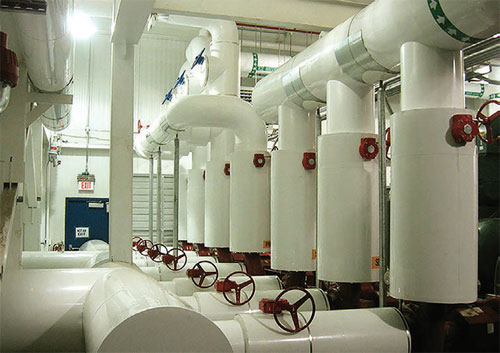By Brice Wallace
A growing number of food manufacturing companies have a hankerin’ for Utah.
Utah has landed several major projects involving those companies the past few years and several more are weighing Utah as a site for possible expansions.
Theresa Foxley, president and CEO of the Economic Development Corporation of Utah, recently told the Governor’s Office of Economic Development (GOED) board that 10 food production projects are sprinkled into the 52 manufacturing projects in EDCUtah’s pipeline.
“If there’s a bright spot in the pipeline right now, it’s certainly manufacturing,” Foxley said. “It’s companies that want to plug a challenge that was exposed during the pandemic, and that was their supply chain. And as we are seeing, that bright spot within the bright spot is food production.”
EDCUtah does not identify companies in its pipeline, but its food-related projects include:
• A $420 million project with 540 jobs on 150 acres. It would feature two product lines. The company is considering several states, including Utah, and a major challenge is meeting its water needs.
• A $70 million project with 230 jobs, using 325,000 square feet on 30 acres. The company wants to grow its footprint and increase capacity to serve regional demand.
• A $90 million project with 300 jobs, using 150,000 square feet on 20 acres and needing refrigeration capabilities.
• A $100 million project with 200 jobs and using 350,000 square feet.
If Utah can land them, they would add to a decent menu of project wins in recent years, including Oatly, whose $40 million project is expected to lead to 50 new jobs and the use of 100,000 square feet in Ogden; Tyson Foods, $286 million, 1,372 jobs and 408,000 square feet on 80 acres in Eagle Mountain; Schreiber Foods, $70 million, 70 jobs and 45,000 square feet in Logan; and West Point Dairy, $75 million, 30 jobs and 140,000 square feet in Hyrum.
Further back, in November 2016, the state dished out a tax credit incentive for Denver-based WhiteWave Foods Co. to put a manufacturing and warehouse operation in Utah. It put a plant in West Jordan after it was acquired by Danone, which has Dannon among its brands.
In February 2019, when the GOED board approved the Oatly Inc. incentive, Mike Flynn, EDCUtah’s chief operating officer, said that landing Oatly would be a “win” that the state could market and that EDCUtah would begin to “get aggressive about the food business.”
Food production projects are tasty for Utah because, among other reasons, they are major boosters to tax bases; their relatively small headcounts lend such projects to rural locations; they tend to stay and grow; and if they leave, their buildings and/or equipment are highly marketable to other companies. And companies with an appetite for Utah will find the state has local general contractors with world-class expertise in whipping up food projects.
But people hungry for those projects need to realize that they also represent challenges. That mix includes heavy use of utilities, primarily water and sewer; major impacts on municipal services; and limited site options.
“At the moment, we have about the same four or five communities that are really well-prepared to compete for big food projects,” Foxley said.
Among expected trends are food production companies moving away from human capital and toward technology; a California exodus as minimum-wage requirements “continue to ratchet,” Foxley said; a lack of cold storage space nationally that will drive production decisions; and companies’ needs to be near large markets but not necessarily in large markets.
To feed those companies’ interest in Utah, Foxley suggested that the state identify additional sites for such operations, including additional rural options that have enough water and sewer capacity.
“This is a big part of our pipeline,” Foxley said of companies considering Utah. “We imagine that this trend will continue because of the pandemic exposures that many of these companies noticed. It’s resulted in nearshoring, reshoring and shorter supply chains, etc., etc.”








